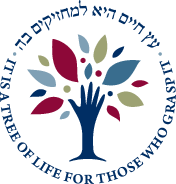D’var Torah: Parashat Vayigash
Integration, not assimilation.
In Parshat Vayigash we read how Yosef had just revealed his true identity to his brothers. They were stunned into silence. And then, he said to them G’shu Na Eilaiy, ‘Please come close to me’, Vayigashu, ‘and then they came close to him’. And then he revealed to them so many facts and details of his former life that it was beyond all doubt that he indeed was their brother, Yosef.
G’shu, Vayigashu, these words come from the root Gesh, which means to come ‘close to…’ but not to become a ‘part of…’.
Now we can understand why the Hebrew word for bridge is Gesher, coming from the same root. You cross the bridge from one side of the river or valley to the other. Thanks to the bridge, you can communicate, you can participate, you can have a partnership. However the two sides of the bridge still maintain their separate identities.
You see, when the Israelites arrived in the Land of Egypt, Yosef purposefully settled them in the Land of Goshen – from the same root. He wanted to ensure that they would integrate well into Egyptian society, that they would give a contribution of value to their environment, but at the same time, through being in Goshen, they would maintain their own Kedusha, the sacred ways of their tradition and also preserve their own independent identity.
So from the terms G’shu, Vayigashu, Gesh, Gesher and Goshen, we learn the important lesson, that while we integrate, we shouldn’t assimilate and at the same time, we should always be immensely proud of our own traditional Jewish identity.
Shabbat Shalom

